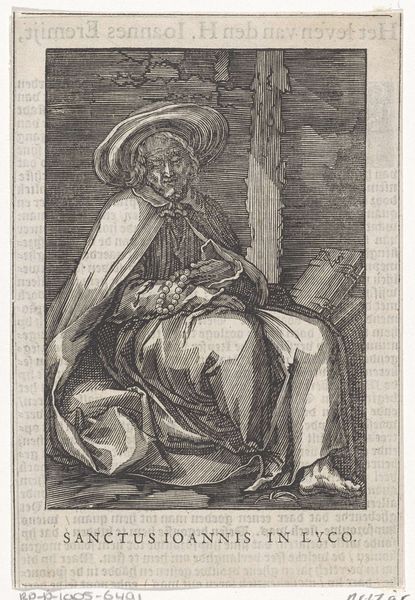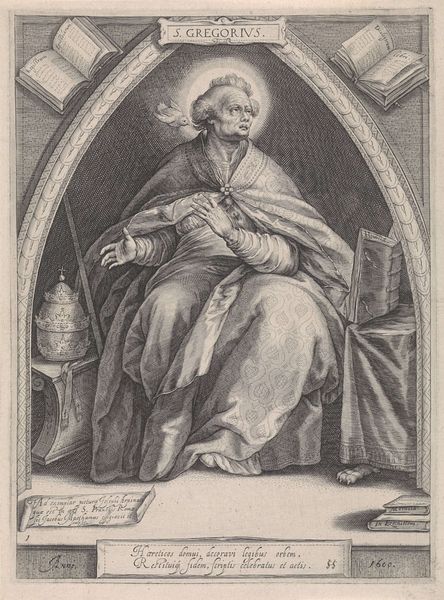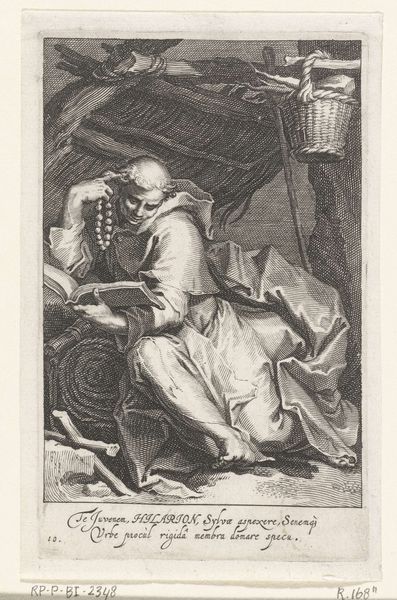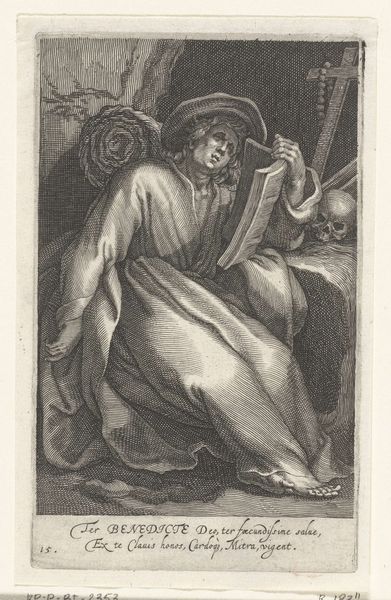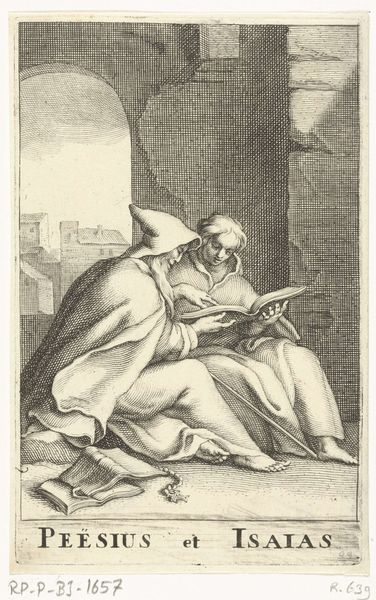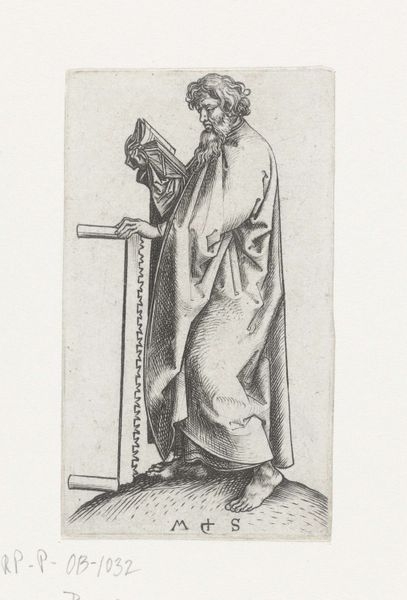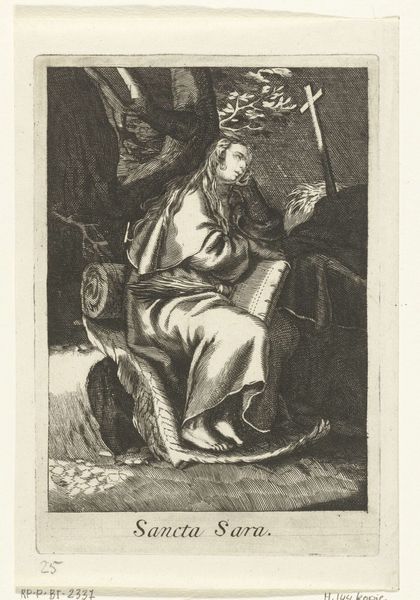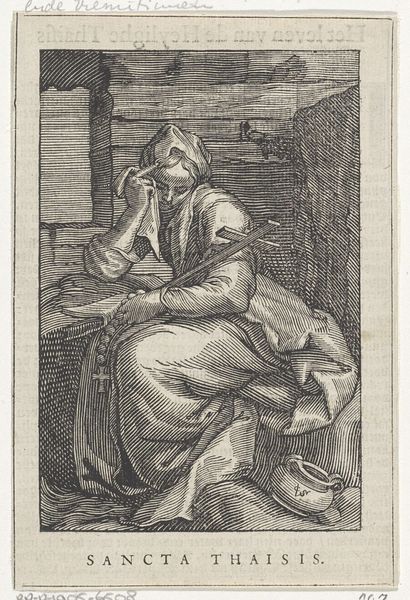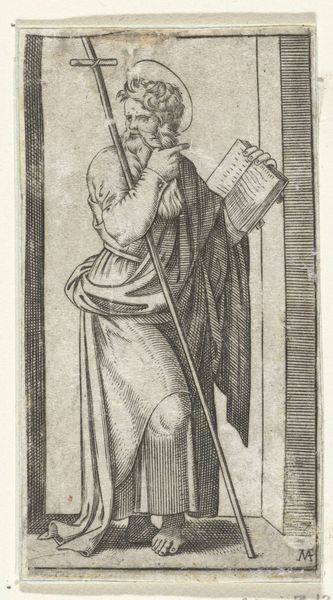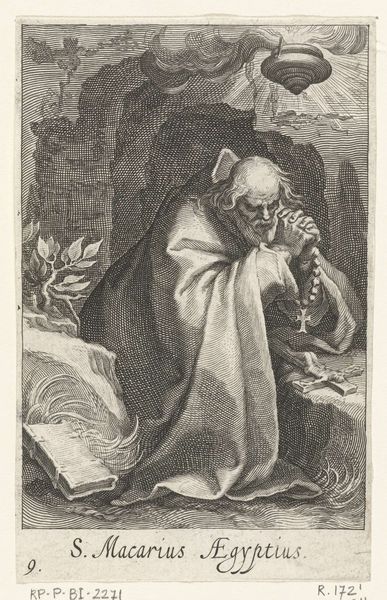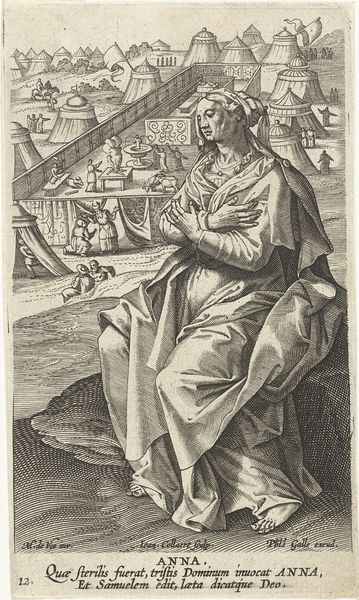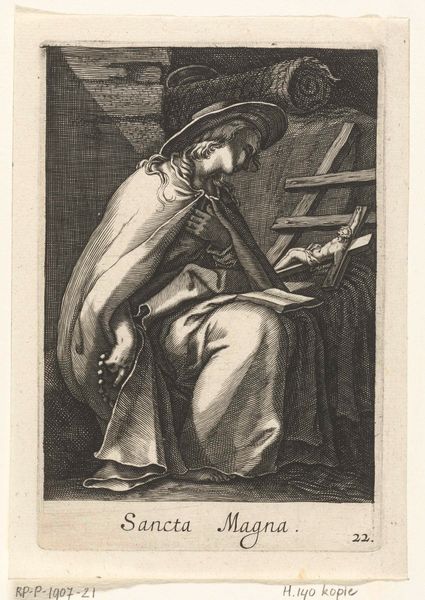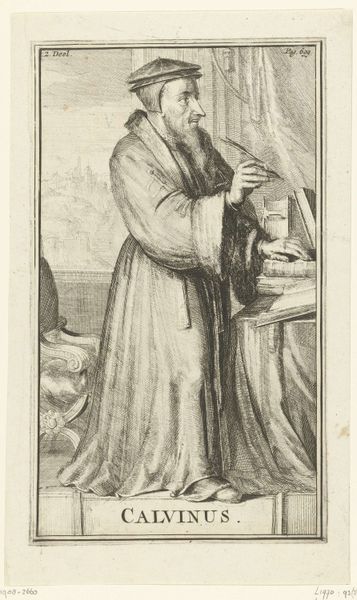
Heilige Johannes van Lycopolis als kluizenaar in zijn cel 1590 - 1619
0:00
0:00
engraving
#
portrait
#
baroque
#
old engraving style
#
portrait reference
#
portrait drawing
#
engraving
Dimensions: height 145 mm, width 92 mm
Copyright: Rijks Museum: Open Domain
Curator: Welcome, everyone. Here at the Rijksmuseum we have before us an engraving dating from 1590 to 1619 by Boëtius Adamsz. Bolswert titled "Saint John of Lycopolis as a Hermit in his Cell". Editor: My initial reaction is that of quietude. There's something deeply peaceful about this image, yet somber too, rendered through meticulous cross-hatching. You immediately notice the soft light on his robes, the intricate lines forming the texture. Curator: Absolutely, the technical skill evident in the engraving is noteworthy. Look at the precise labor invested in those lines. We are, in essence, looking at an aesthetic commodity here, available thanks to printing and reproductive technology. But tell me more about that somber mood… Editor: Well, we see St. John seated, hat shadowing his face. He holds prayer beads in his hands. The imagery speaks to reflection and contemplation—universal concepts and experiences across time. Those books beside him denote not only learning, but connection with cultural wisdom through texts. It evokes the idea of turning inward in order to reflect. Curator: I'd also like to point out the labor required in producing prints, like this. How was the division of labor organized in Bolswert’s studio? Who designed the composition and how many prints were distributed after it was produced? These considerations shed a light on the historical context. Editor: A good point! We're also talking about St. John, who chose to become a hermit. He carries the heavy symbolic weight of withdrawing from society to pursue a divine connection, common within many religious narratives. The image reinforces certain symbolic conventions regarding sainthood through visual representation. Curator: And it all ties back into labor doesn’t it? The saint's ascetic existence, and then Bolswert’s meticulous work creating this object, along with the craft of papermaking to spread it. Both kinds of labor highlight forms of production in their own right. Editor: Yes! These things intersect. By bringing that understanding, one could engage with deeper connections within cultural memory. I’ve gleaned new respect for its composition—all these readings. Curator: Indeed. From the materials employed, to the cultural image this object spreads, there is much more than the eye beholds upon a first glance.
Comments
No comments
Be the first to comment and join the conversation on the ultimate creative platform.
